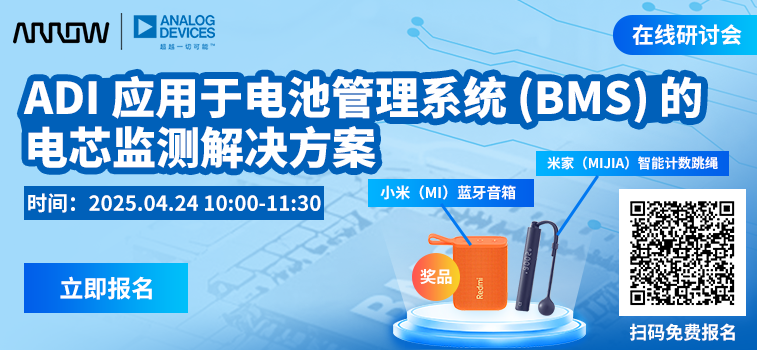A competitive ecosystem has emerged globally around AI inference and training for edge devices. In 2021, Europe launched a research and development investment project named Prevail, aimed at enhancing Europe’s competitiveness in the global semiconductor industry by promoting innovation in edge AI. This project supports industrial enterprises of various sizes in developing and testing high-performance, low-power semiconductor products to meet the rapidly growing demand in the edge AI market by introducing new tools and integrating them into existing pilot production lines. The project is jointly operated by four European research and technology organizations, including the French Atomic Energy Commission’s Electronics and Information Technology Laboratory (CEA-Leti), the German Fraunhofer Society for the Advancement of Applied Research (Fraunhofer), the Belgian Interuniversity Microelectronics Centre (imec), and the Finnish VTT Technical Research Centre. The European Union provides funding support through the European Chips Act, with participating countries contributing matching funds proportionally. Among them, CEA-Leti, Fraunhofer, and imec each received €78 million from the EU and their respective countries, while VTT received €7 million from the EU and Finland.
Multi-Hub Testing and Experimental Facilities According to Sergio Nicoletti, project manager at CEA-Leti and coordinator of the Prevail project, the four independent pilot production lines of the alliance (RTO alliance) will collectively form a multi-hub testing and experimental facility (TEF), where companies can utilize this facility for testing and developing new components and prototypes. One of the services provided by TEF is multi-project wafer manufacturing, allowing different customers to produce components on the same wafer. Nicoletti pointed out that although chips are typically only 10 square millimeters or smaller, the wafer is large enough to accommodate hundreds of different components. By sharing wafers, customers can significantly reduce production costs. Reducing costs presents opportunities for small enterprises in the edge AI field. According to Martin Landgraf, research manager at the Fraunhofer Institute for Photonic Microsystems (IPMS), the rise of startups may increase Europe’s chances of gaining market share in this emerging market. Landgraf noted that edge AI is still an open market, unlike the cloud AI field, which is dominated by large American companies. Although companies like China’s DeepSeek have shown the potential for disruption, all models primarily rely on NVIDIA chipsets and cloud platforms. The entry barrier for cloud AI is much higher than for edge AI. Therefore, Europe has greater room for development in the edge AI field, and startups can establish themselves in the market through innovation and cost advantages. In the first two years of the Prevail project, the alliance completed tool procurement, cleanroom facility preparation, and designing demonstrators. In the current phase, research and technology organizations have begun installing new equipment. According to Nicoletti, although the project will end in May 2026, discussions about similar collaborative arrangements had already begun among the four research and technology organizations before the project started in 2021. In the future, the alliance will continue to provide services, offering access support to customers until May 2029.【Editor’s Note: Designing Demonstrators refers to testing and validating design proposals through the creation of prototypes or demonstrators. These “Demonstrators” are typically models used to showcase technical concepts, validate design functions, or performance, rather than final products.】 The EU provides half of the funding for new tools for the four cleanrooms and has additionally allocated €20 million to fund specific customers using the multi-hub testing and experimental facilities. Funding proposals have been accepted since February of this year. Nicoletti stated that potential customers for TEF include project clients supported by the European Commission, as well as independent clients not relying on EU subsidies. Additionally, the alliance can collaborate with non-EU companies, but these companies will not receive EU funding support. As the design phase of the project requires 6 to 12 months, manufacturing will not start until about a year later. Nicoletti said, “During this period, we will continue to optimize tools and enhance technical capabilities.” Although the research and technology organizations engage in similar work, each possesses unique capabilities, collectively supporting the multi-hub testing and experimental facilities. To ensure close collaboration, the alliance holds online meetings monthly and two face-to-face meetings annually. Furthermore, to keep the project aligned with its goals, Nicoletti regularly meets with EU officials to review the progress of the pilot production lines and other aspects. Despite the EU only starting to review formal proposals in February of this year, some industrial enterprises have already consulted in advance. Nicoletti is optimistic about this, stating that the market response has exceeded expectations. He initially expected clients to participate later, but informal contacts with potential users indicate interest in such services.
Europe’s Advantages in Edge AI Although potential clients have released early positive signals, the Prevail project may still face challenges in achieving its goals. Nicoletti pointed out, “Europe has deep expertise in edge AI applications, but hardware manufacturing is still primarily dominated by companies in the U.S. and China.” This project aims to bridge this gap and enhance Europe’s competitiveness in the global edge AI ecosystem. The EU’s funding investment is far less than that of the U.S. and China. Today, Europe is betting on pilot projects like Prevail, hoping that these projects can leverage Europe’s strengths to help the region maintain relevance. While the Prevail project has a solid foundation, Landgraf believes that more initiatives are needed to support startups. He cited Germany’s “Silicon Saxony” as an example, where the industrial cluster includes major foundries like Infineon, GlobalFoundries, Bosch, X-FAB, and the soon-to-join European Semiconductor Manufacturing Company (ESMC), forming a startup ecosystem centered around new memory computing architectures. Landgraf emphasized the need to further nurture and support these startups to drive Europe’s continued development in related fields. While supporting the growth of emerging edge AI enterprises, Europe should also leverage its existing advantages in the microelectronics field. The automotive industry is a significant target for edge AI development, and Europe has a solid position in this field, with several major automotive manufacturers headquartered in Europe. Currently, the automotive industry is undergoing dramatic technological changes, with advancements in autonomous driving technology and a shift towards electric drive systems, presenting development opportunities for Europe in the edge AI field. According to Nicoletti, the healthcare industry is another area where Europe still has expertise and is undergoing significant transformation. The demand for home diagnostic devices and wearable technology is growing, and Europe’s advantages in microelectronics position it favorably in this transformation. Nicoletti noted that the majority of clients for the Prevail project are expected to be startups, as large companies tend to be cautious about experimenting with high-risk technologies. Landgraf pointed out that Europe can play a role in the edge AI field by supporting startups, especially as there are still opportunities to build from the ground up in this area.This article is translated from the sister platform of International Electronic Business, EETimes Europe, with the original title: Will Europe ‘Prevail’ in Edge AI?
Hot Articles
Micron Issues Price Increase Notice
2025-03-27

14999 Yuan: Huawei HarmonyOS PC Exposed
2025-03-27

Bad Debt Resolved! ASUS Recovers 5.3 Billion in Indian Market
2025-03-27

SMIC 2024 Annual Report: Sales Revenue Increases by 27.0%, Setting a New Record
2025-03-29

Evergrande Auto Stock Price Soars 200%
2025-03-26

